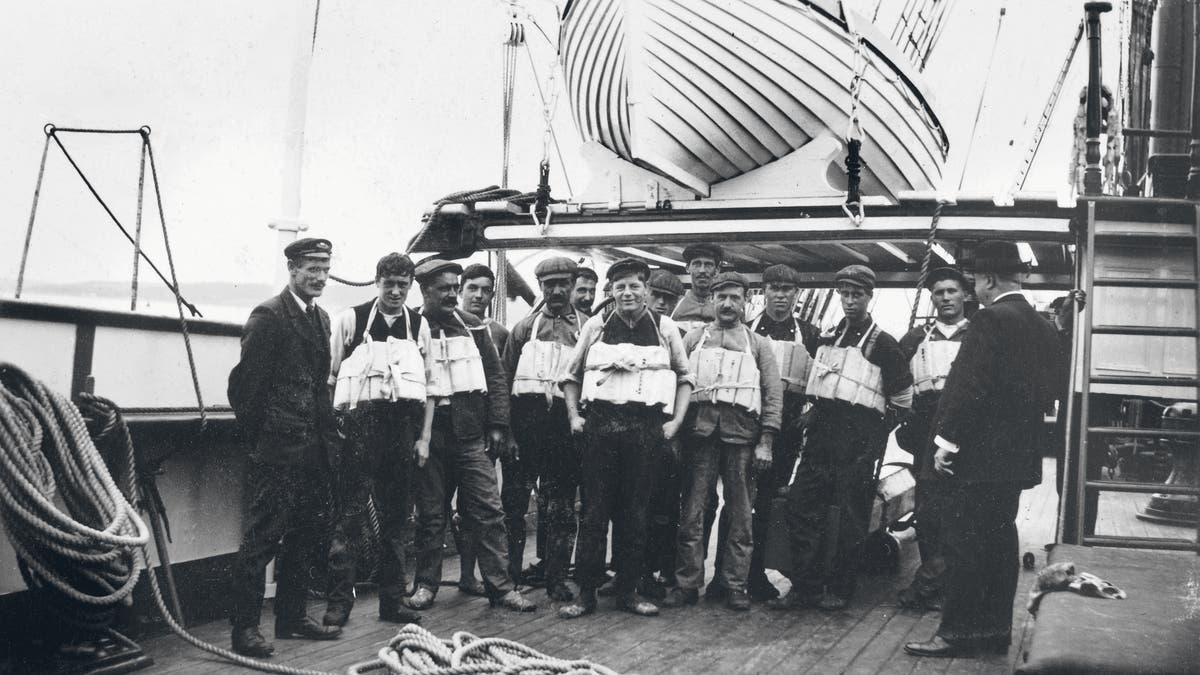
Members of the Titanic crew pose with lifejackets. (The Father Browne Collection)
The photographs of a single camera enthusiast who traveled aboard the Titanic before its fatal voyage have resurfaced for the 100th anniversary of the sinking, revealing a remarkable glimpse at what life was like for passengers of the ill-fated ship.
The Rev. Francis Browne, a Jesuit priest, sailed the first leg of the Titanic’s maiden voyage, between Southampton, England, and Cobh, Ireland -- taking a series of black-and-white photos of life onboard the luxury liner. He planned to stay on the ship to New York but was ordered by his superior to return home instead.
Browne was lucky. After striking an iceberg on April 15, 1912, the Titanic took 1,500 people with it to its watery grave miles below the surface of the Atlantic.
Browne survived, thanks to the demands of his ministry, and so did his photographs, which were rediscovered in 1985 by a fellow priest.
His fantastic tale is documented in the book “Father Browne's Titanic Album: Centenary Edition,” a unique memoir and photographic record of HMS Titanic on her maiden voyage that publisher Messenger Publications in Ireland is rereleasing to coincide with the anniversary.
Book available from Messenger Publications.
The photographs Browne took were used as references during the set design process for the film "Titanic," a spokeswoman for The Sacred Heart Messenger told FoxNews.com, because of the remarkable documentation they provide of life on the ocean liner. Pictures reveal an exercise room being put to use, passengers boarding by gangplank and luggage being loaded, as well as the grand scale of the ship itself.
Browne’s story is as amazing as his unique photos: He was offered a ticket to ride to New York on the next leg of the Titanic and likely would have drowned had he not been called back to his parish, the spokeswoman said.
His passion for the emerging practice of photography became well known; 24 books of his photographs have been published, according to the Messenger. And his dual roles -- as priest and cameraman -- are no coincidence, according to the Rev. John Looby, editor of the Messenger.
“I do not believe that there is merely some coincidence here between Father Browne being a priest and a photographer,” Looby recently wrote. “The priest tries to see God in each person he meets and ministers to, and the photographer tries to capture what is revealed in his photos.”
The wreckage of the Titanic has been a source of fascination for millions. New images of the wreck recently were revealed showing for the first time the full stretch of the “unsinkable” boat -- sprawled silently 12,500 feet beneath the Atlantic Ocean's surface.
That set of new photographs, released in the April 2012 edition of National Geographic magazine to coincide with the 100th anniversary of the shipwreck, reveal the full expanse of the ship, rather than the dim images of bits of the hull or pieces of wreckage seen to date.
The meticulously stitched-together mosaic took experts at the Woods Hole Oceanographic Institution months to construct, the magazine said.
“Now we know where everything is,” Bill Lange, head of the organization's Advanced Imaging and Visualization Laboratory, told National Geographic. “After a hundred years, the lights are finally on.”




















